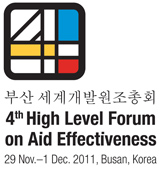“The tragedy of the world’s 160 million missing girls isn’t that they’re “missing.” The tragedy is that they’re dead.”
In 1990, the economist Amartya Sen published an essay in The New York Review of Books with a bombshell title: “ More than 100 Million women are missing.” His subject was the wildly off-kilter sex ratios in India, China and elsewhere in the developing world. To explain the numbers, Sen invoked the “neglect” of third-world women, citing disparities in health care, nutrition and education. He also noted that under China’s one-child policy, “some evidence exists of female infanticide.” The essay did not mention abortion.
 Image source: www.lifenews.com
Image source: www.lifenews.com
Twenty years later, the number of “missing” women has risen to more than 160 million, and a journalist named Mara Hvistendahl has given us a much more complete picture of what’s happened. Her book is called “Unnatural Selection: Choosing Boys over Girls, an the Consequences of a World Full of Men.” As the title suggests, Hvistendahl argues that most of the missing females weren’t victims of neglect. They were selected out of existence, by ultrasound technology and second-trimester abortion. The spread of sex-selective abortion is often framed as a simple case of modern science being abused by patriarchal, misogynistic cultures. Patriarchy is certainly part of the story, but as Hvistendahl points out, the reality is more complicated — and more depressing.
Thus far, female empowerment often seems to have led to more sex selection, not less. In many communities, she writes, “women use their increased autonomy to select for sons,” because male offspring bring higher social status. In countries like India, sex selection began in “the urban, well-educated stratum of society,” before spreading down the income ladder.
Moreover, Western governments and philanthropic institutions have their fingerprints all over the story of the world’s missing women. From the 1950s onward, Asian countries that legalized and then promoted abortion did so with vocal, deep-pocketed American support. Digging into the archives of groups like the Rockefeller Foundation and the International Planned Parenthood Federation, Hvistendahl depicts an unlikely alliance between Republican cold warriors worried that population growth would fuel the spread of Communism and left-wing scientists and activists who believed that abortion was necessary for both “the needs of women” and “the future prosperity — or maybe survival — of mankind,” as the Planned Parenthood federation’s medical director put it in 1976. For many of these antipopulation campaigners, sex selection was a feature rather than a bug, since a society with fewer girls was guaranteed to reproduce itself at lower rates.
Hvistendahl’s book is filled with unsettling scenes, from abandoned female fetuses littering an Indian hospital to the signs in Chinese villages at the height of the one-child policy’s enforcement. (“You can beat it out! You can make it fall out! You can abort it! But you cannot give birth to it!”) The most disturbing passages, though, are the ones that depict self-consciously progressive Westerners persuading themselves that fewer girls might be exactly what the teeming societies of the third world needed.
Over all, “Unnatural Selection” reads like a great historical detective story, and it’s written with the sense of moral urgency that usually accompanies the revelation of some enormous crime. But what kind of crime? This is the question that haunts Hvistendahl’s book, and the broader debate over the vanished 160 million.
The scale of that number evokes the genocidal horrors of the 20th century. But notwithstanding the depredations of the Chinese politburo, most of the abortions were (and continue to be) uncoerced. The American establishment helped create the problem, but now it’s metastasizing on its own: the population-control movement is a shadow of its former self, yet sex selection has spread inexorably with access to abortion, and sex ratios are out of balance from Central Asia to the Balkans to Asian-American communities in the United States.
This places many Western liberals, Hvistendahl included, in a distinctly uncomfortable position. Their own premises insist that the unborn aren’t human beings yet, and that the right to an abortion is nearly absolute. A self-proclaimed agnostic about when life begins, Hvistendahl insists that she hasn’t written “a book about death and killing.” But this leaves her struggling to define a victim for the crime that she’s uncovered. It’s society at large, she argues, citing evidence that gender-imbalanced countries tend to be violent and unstable. It’s the women in those countries, she adds, pointing out that skewed sex ratios are associated with increased prostitution and sex trafficking.
These are important points. But the sense of outrage that pervades her story seems to have been inspired by the missing girls themselves, not the consequences of their absence. Here the anti-abortion side has it easier. We can say outright what’s implied on every page of “Unnatural Selection,” even if the author can’t quite bring herself around.
The tragedy of the world’s 160 million missing girls isn’t that they’re “missing.” The tragedy is that they’re dead.




